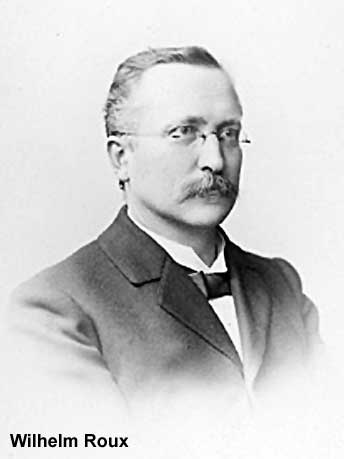Talk:Embryology History - Wilhelm His
| About Discussion Pages |
|---|
On this website the Discussion Tab or "talk pages" for a topic has been used for several purposes:
Glossary Links
Cite this page: Hill, M.A. (2024, April 27) Embryology Embryology History - Wilhelm His. Retrieved from https://embryology.med.unsw.edu.au/embryology/index.php/Talk:Embryology_History_-_Wilhelm_His |
2018
Dev Biol. 2018 Dec 1;444 Suppl 1:S14-S24. doi: 10.1016/j.ydbio.2018.02.001. Epub 2018 Feb 12. Wilhelm His' lasting insights into hindbrain and cranial ganglia development and evolution. Glover JC1, Elliott KL2, Erives A2, Chizhikov VV3, Fritzsch B4. Author information Abstract Wilhelm His (1831-1904) provided lasting insights into the development of the central and peripheral nervous system using innovative technologies such as the microtome, which he invented. 150 years after his resurrection of the classical germ layer theory of Wolff, von Baer and Remak, his description of the developmental origin of cranial and spinal ganglia from a distinct cell population, now known as the neural crest, has stood the test of time and more recently sparked tremendous advances regarding the molecular development of these important cells. In addition to his 1868 treatise on 'Zwischenstrang' (now neural crest), his work on the development of the human hindbrain published in 1890 provided novel ideas that more than 100 years later form the basis for penetrating molecular investigations of the regionalization of the hindbrain neural tube and of the migration and differentiation of its constituent neuron populations. In the first part of this review we briefly summarize the major discoveries of Wilhelm His and his impact on the field of embryology. In the second part we relate His' observations to current knowledge about the molecular underpinnings of hindbrain development and evolution. We conclude with the proposition, present already in rudimentary form in the writings of His, that a primordial spinal cord-like organization has been molecularly supplemented to generate hindbrain 'neomorphs' such as the cerebellum and the auditory and vestibular nuclei and their associated afferents and sensory organs.
Copyright © 2018 Elsevier Inc. All rights reserved.
PMID: 29447907 PMCID: PMC6087689 DOI: 10.1016/j.ydbio.2018.02.001
Wilhelm His Jr. (1863-1934)--the man behind the bundle
Heart Rhythm. 2006 Apr;3(4):480-3.
Roguin A.
Abstract
Wilhelm His Jr. (1863-1934) was a Swiss-born cardiologist and anatomist. In 1893, he discovered the bundle of His-the specialized tissue in the heart that transmits the electrical impulses and helps synchronize contraction. He pioneered studies in cardiac conduction and coined the term "heart block," which he identified as the cause of Adams-Stokes disease. He was a professor of medicine at the University of Berlin, became the dean of medicine in 1918 and in 1928 was elected rector of the University of Berlin. Through his long clinical and teaching career he became better known for his work on gout and diseases of the joints. "Trench fever," or Werner-His disease, was also named after him. This report presents the life and work of Wilhelm His Jr., who was described by his colleagues as "a master of his profession, a great physician, investigator, and a well cultured gentleman." PMID 16567300
Johann Friedrich Meckel the Younger (1781-1833)
- discoverer of the syndrome and cartilage named after him
- interpreted the developmental nature of the "Meckel" diverticulum
Wilhelm Roux (1850 - 1924)

